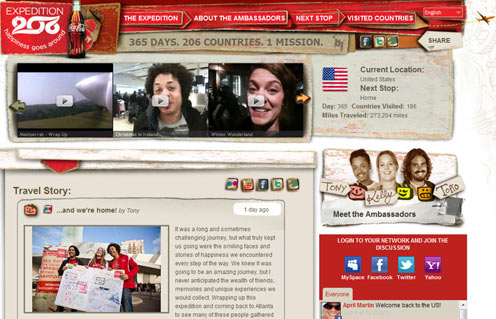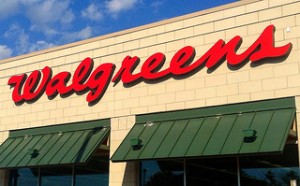Coca-Cola.
Say the name, and almost everyone around you has either heard the name before, or they’ve had the product perhaps a few times. Coca-Cola has been around for quite some time, with its first drink having been sold in Atlanta, GA in 1888. Since that time, the company has grown substantially with their product presence in several major countries across the globe.
However, even with its strong global presence, Coca-Cola still embraces social media and recently decided to escalate their efforts to another level. The company introduced a project called Expedition 206, which focused on instilling their brand of “happiness” in their customers all over the world. To that end, the company organized a team of young people, dubbed The Happiness Ambassadors, who in 365 days visited over 186 countries where the product is sold. What was their goal? To find happiness.

Ideas of Social Networking
Social networking is much more than just parading a long list of friends, or being able to show how many people re-posted one of your best articles. If only our success were measured by how many times our business site received a star, a ping, a re-post, tweet or nod, then there wouldn’t be any room for improvement. Or creativity.
Social networking stretches a bit more than the traditional methods and delves into actually reaching out and communicating with people on different platforms. One of the best ways to quantify any social media project is to engage the audience by talking to them, listening to them, asking their opinions, getting genuine feedback and making your communications count. Coca-Cola took full advantage of this and made great use of their resources by dealing directly with the people and in the places where their product is consumed. The feedback was overwhelming, as was the media exposure and the attention that this project received world-wide.
Sharing Moments
The crew’s interest was in finding and recording social opportunities to share everything about Coca-Cola. They networked, shared, talked with and photographed hundreds if not thousands of people who were interested in and/or wanted to learn more about the company Coca-Cola. The crew documented their journey directly on the project’s site at Expedition206.com and on the other popular social networking platforms, Twitter, YouTube and Facebook.
The project has been a creative process for Coca-Cola, primarily to increase brand awareness, but mostly to stretch the idea of social networking to another plane. Many times, businesses are under the impression that the bulk of social media efforts should be done mainly online. After all, the online audience is incredibly vast, and the opportunity to reach such diverse segments of the population is endless. But Coca-Cola approached the Expedition 206 project in a completely different manner.
It has been the company’s largest social media project to date. So can they really gauge their success through this project? Would it be accurate to say that people now have a better understanding of the brand, more appreciation of the company’s efforts and even more, do they enjoy Coke better than they did before?
What do you think? Was the company creative in their social media approach? Is this true success, or simply another way to brand a name? Please share your thoughts.
I am a freelance writer, blogger and professional motivational speaker. I primarily focus on business content, offering my clients strategic marketing strategies for their businesses. I have been an entrepreneur for over 13 years, after having worked extensively in corporate America.



Coke continues to nurture its own brand even though their brand is already established. This is how branding should work; continuous engagement and great service all in one.